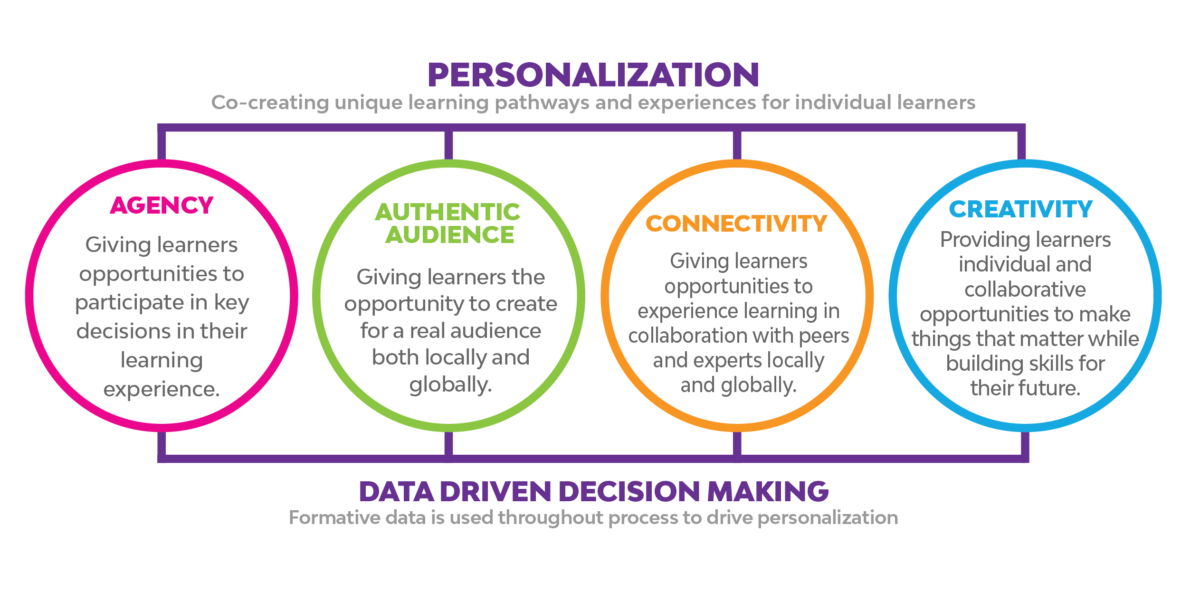Live Life on the Edge: Co-designing Instruction with Your Students
Designing curriculum and lesson planning for students is a massive industry. It is truly a critical part of our K-12 educational system. Every month, millions of dollars are poured into designing textbooks, creating resources, projects, assignments, and homework that will support student growth in class and reinforce practice at home. I wonder if we can flip this idea, what if students themselves express that they have learned the content as well as shared how they have acquired the new knowledge?
Long ago, personalized lessons tailored to each child's learning style and ability were so unbelievably expensive; they could only be implemented by wealthy families who could afford a college-level tutor for their children. But now that we live in the digital age of the internet and every home has some kind of internet-connected device, including a tablet, laptop, or desktop, and a smartphone, creating personalized lessons has never been easier and accessible. Although in many cases teachers are prescribing lessons for students what if students can personalize their own lessons?
Have you thought about asking your students about their goals?
There are seven different features that a student can tweak and change to create a lesson that is made specifically for them. Those features are place, goals, instructional methods, time, pace, and learner choice. This concept is to create accurate lessons and curriculum for students while allowing them to personalize their educational path, both teachers and students must co-design the instruction or lesson plans. Students will be able to provide ideas and feedback on the lessons as teachers, and lesson plan designers watch over them. It is always important to consider the students themselves in lessons and how each age and their previous education impacts their current learning abilities. Having students design part of the lesson can help teachers create better lessons.
Do you think Standardized learning will go away?
Multiple studies have shown that when a classroom implements personalized learning, the students' overall and individual grades and comprehension improve. Some students who were having a hard time with traditional methods improved significantly, while others who were already doing well improved slightly. But these changes show that standardized learning should soon become a thing of the past (Kamenetz, Anya, et al, 2018).
Another way to help students personalize their education is by creating a detailed goal map. A detailed goal map will help both the students and the teacher create an outline of what must be achieved in a subject and which skills, attitudes, and knowledge they must develop to complete the goal. It is similar to breaking down curriculum requirements into small pieces that a student can use to direct their personalized learning goals.
How many students would take advantage of this opportunity?
Perhaps the greatest advantage of personalized lessons in part on the student is the mindset to take their education into their own hands. A standardized curriculum doesn't have much room to develop a student's agency, but personalized lessons are co-written and student-driven. When students can personalize their learning, they can then understand their goals, why they have to learn them, and what targets they must hit to complete their education. They are then able to self-direct their education, whether they're in the classroom or at home (Susan Fine, 2017).
References
Kamenetz, Anya, et al. 2018. “The Future of Learning? Well, It's Personal." NPR, NPR, 16 Nov. 2018, https://www.npr.org/2018/11/16/657895964/the-future-of-learning-well-it-s-personal.
Susan Fine — Sep 28, 2017, et al. "Three Ways to Empower Students to Co-Design Learning." GOA, May 13, 2021, https://globalonlineacademy.org/insights/articles/three-ways-to-empower-students-to-co-design-learning.
Wycoff, T. (n.d.). [IMAGE] Generativity in action - 3 steps to building a culture of student generativity LINC: The learning innovation catalyst. LINC. Retrieved November 11, 2021, from https://linclearning.com/generativity-in-action-3-steps-to-building-a-culture-of-student-generativity-2/.

